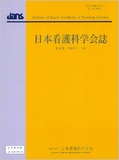Japanese
English
- 販売していません
- Abstract 文献概要
- 参考文献 Reference
要旨
目的:全国の周産期医療施設の災害への備えの実態を明らかにし,その実態に関連する要因を検討した.
方法:日本医療機能評価機構の産科医療補償制度加入分娩施設一覧に登録された2,909カ所の産科,産婦人科,助産所の災害への備えの管轄を行う管理職を対象に,無記名自記式質問紙調査を実施した.主に施設の防災対策と妊産婦への防災教育の実態を調査した.データは,記述統計,相関分析及び重回帰分析を行った.
結果:有効回答795部の分析の結果,施設の防災対策で実施された項目は平均9.3点(0〜22点),「設備・準備」「文章化」は概ね実施,「訓練・教育」「人材」「地域連携」の実施率は低く,妊産婦への防災教育は,回答があった施設の3割程度で実施され,実施項目の平均は2.5点(0〜18点)であった.関連要因は,「災害拠点病院である」「被災地への看護職派遣経験がある」「施設の自然災害リスク認知が高い」などであった.
結論:災害対策能力向上のための訓練,教育の強化,妊産婦への防災教育への認識の向上が必要である.
Purpose: This study examined the current status of disaster preparedness at perinatal medical care facilities across Japan and supporting factors.
Method: An anonymous self-administered questionnaire was administered to the nursing supervisors of 2,909 facilities (hospitals, clinics, and birthing centers) that were on the list of birthing facilities participating in the Japan Obstetric Compensation System for Cerebral Palsy operated by the Japan Council for Quality Health Care. Mainly investigated disaster management in facilities and disaster education for perinatal women. Descriptive analysis, correlation analysis, and multiple regression analysis were performed.
Results: Seven hundred and ninety-five participants provided valid responses to the questionnaire. The mean number of disaster management-related items that were in place was 9.3 (0-22). The implementation rates of the items “Facility and Preparedness” and “Documentation” were high whereas those of the items “Training,” “Human Resources,” and “Regional Alliance” were low. Regarding disaster education for perinatal women, the mean number of items in place was 2.5 (0-18). Only about 30% of the facilities had implemented such education. Factors that promoted disaster preparedness included “The facility is a disaster base hospital,” “The facility previously dispatched nurses to disaster areas,” “The facility is well aware of natural disaster risks,” “Nursing supervisors have been trained to provide nursing care during a disaster,” and “Nursing supervisors are well aware of the post-disaster care needs of perinatal women.”
Conclusion: It is necessary to develop strategies for establishing a perinatal medical care system, implementing training to improve disaster management competency, strengthening disaster education, and enhancing awareness of disaster education among perinatal women.
Copyright © 2022, Japan Academy of Nursing Science. All rights reserved.


